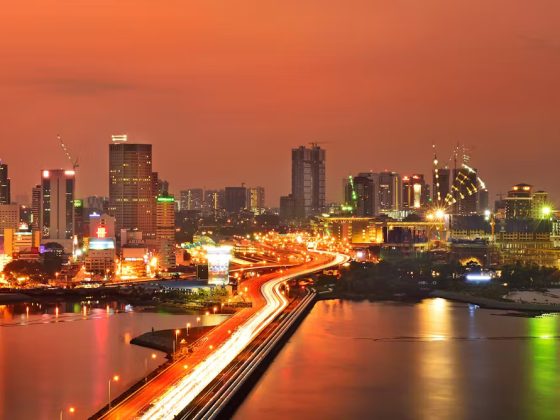Dr. Victoria Pueyo is an eye doctor for babies. They’re referred to as non-collaborative patients, which makes sense, because they can’t voice their thoughts or perceptions.
Think of your last eye exam:
Read the last row.
What’s more clear, this… or that?
What number do you see in the colored dots?
Any parents reading this will know how hard it is to get toddler to sit still, much less answer any questions. The same goes for kids with developmental challenges. Needless to say, there aren’t many people out there who can do what Dr. Pueyo does.
So she set out to change that.
Helping every child see
According to the World Health Organization, there are 19 million visually impaired children (PDF) around the world. As you might expect for someone in Dr. Pueyo’s line of work, she has a great vision: a world where no child goes undiagnosed.
The stakes are much higher than squinting to see the whiteboard in math class. Of these 19 million children, three in every five have serious conditions that can lead to permanent blindness. And in developing countries, 60% of children who go blind at an early age will die within a year from related complications.
The sad truth is that most of these conditions are preventable and treatable if you catch them early, which is where Dr. Pueyo and her team enter the picture.
Her startup, DIVE-Medical, joined forces with Huawei engineers to develop an application called Track.Ai. It uses a small device that tracks how children’s eyes respond to cartoons. Powered by the AI chips on our smartphones, Track.Ai can help diagnose visual impairment in babies as young as six months old.
The equipment is portable, and any non-trained professional can crunch the data right there on their phone – you don’t even need Wi-Fi. With results from Track.Ai, children who are at risk of developing vision problems can be referred to a specialist for treatment.

By making her solution as accessible as possible, Dr. Pueyo has effectively removed the barriers to early diagnosis, even in the world’s most remote communities that don’t have access to high-end medical resources.
It’s incredible. The world needs more people like her.
Leaving no one behind
At the World Economic Forum, we talk a lot about the Fourth Industrial Revolution, an age of transformation where all kinds of different technologies will converge, the speed of innovation will skyrocket, and nearly every industry will change the way it works.
Given this, it’s easy to get excited about the amazing stuff we can do with new breakthroughs in digital technology. But it’s also easy to lose sight of the fact that more complex – and expensive – technology is likely to leave large swaths of the population behind.
A few months ago I was showing off one of our new smartphones to my friend’s parents. They went through all the motions of acting impressed. Then after a few minutes of polite nodding, they looked me straight in the eye and said, “Ken, this is great, but honestly… we don’t like it. We don’t know how to use it.”
They told me that, instead of helping them, new technology was making it harder to get around the city. In China these days, most people book rides on mobile apps, which means it’s becoming more and more difficult to hail a taxi on the side of the road like you used to. So for older people like my friend’s parents, if you can’t use the tech, you’re stuck at home.
Here I was extolling the virtues of digital technology and the two people sitting right in front of me had been completely overlooked. Left behind.
It’s not right.
As technology providers, we need to learn from Dr. Pueyo and design our technology for inclusiveness from the start.

Technology is pointless if people can’t use it
The tech industry has been working on the digital divide for years, mainly focusing on connectivity and ensuring that people from all walks of life have equal access to the tools of the modern world.
And we’ve made great progress. At Huawei alone, our networks have helped connect more than one-third of the world’s population, including people in some of the most remote and underserved regions on the planet.
But inclusiveness doesn’t stop at being connected – it’s also about applications and skills.
Applications are how we create practical value with technology, whether it’s using smartphones to diagnose eye disease in babies or developing accessible mobile money services to pull 2% of households in Kenya out of poverty (PDF).
So we need more applications, and they need to meet the unique needs of different groups of people, communities, and industries so we can bring everyone into the fold.
In addition to developing the right applications, we need to make sure that all people and businesses (especially small businesses) can actually use them. As my friend’s parents made expressly clear, fancy technology doesn’t do much good if you can’t use it.
Every country in the world has an urgent lack of digital skills. According to the European Commission’s survey on the digital skill gap across the EU, 43% of people in the EU don’t know how to perform basic tasks like searching for information online.
That’s a big deal. If we don’t do something about it, these people won’t have the right skills to find work, nor will they have a place in the future digital economy.
Everyone, everywhere
Last year, we started a program called TECH4ALL to help make the digital world more inclusive. We’re partnering up with all sorts of organizations to promote connectivity, as well as more targeted applications and digital skills.
For example, in Kenya, we’re working with UNESCO, Safaricom, and the Belgian NGO Close the Gap to convert 40-foot steel cargo containers into mobile computer labs.
These massive digital trucks are 100% solar-powered, equipped with desks, a range of digital devices, and wireless broadband. Trainers from a local NGO drive them around the country, stopping at every village along the way to teach practical digital skills to women, teachers, and the next generation of digital entrepreneurs. We hope to train at least 6,000 young students and 1,000 teachers in the next year.
It’s a good start, but we have a long way to go. Everywhere.
Connecting people, developing the right applications, and teaching every single person on earth the skills they need to thrive in the digital world – these are all complex challenges, and the only way we can overcome them is by working together.
The World Economic Forum’s new UpLink platform is a great way to start. It’s a place where engaged people, organizations, and companies can come together, exchange ideas, and coordinate efforts to fix the top problems we face in the world today.
We’ve all got something to bring to the table, so if you’re interested in a more equitable, prosperous and sustainable future, take a look and see how you can get involved.
This article is republished from the World Economic Forum.










